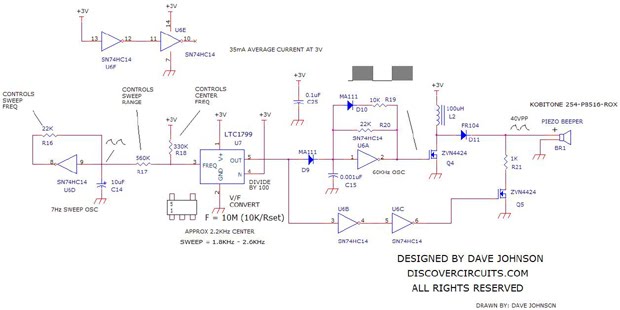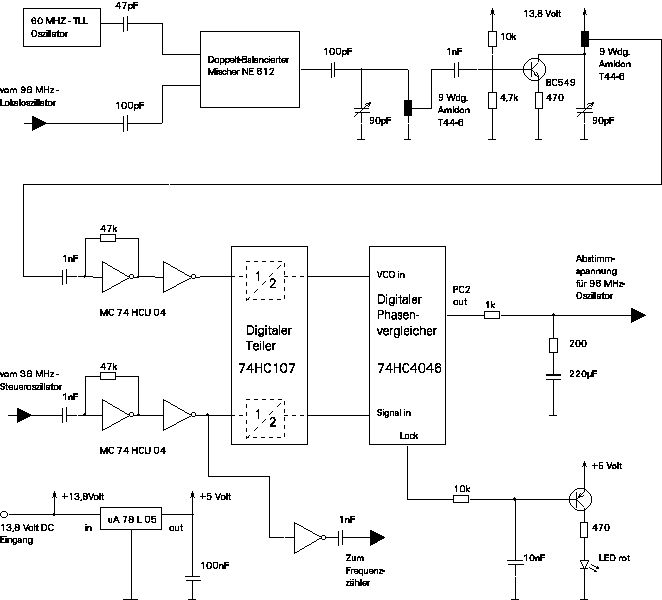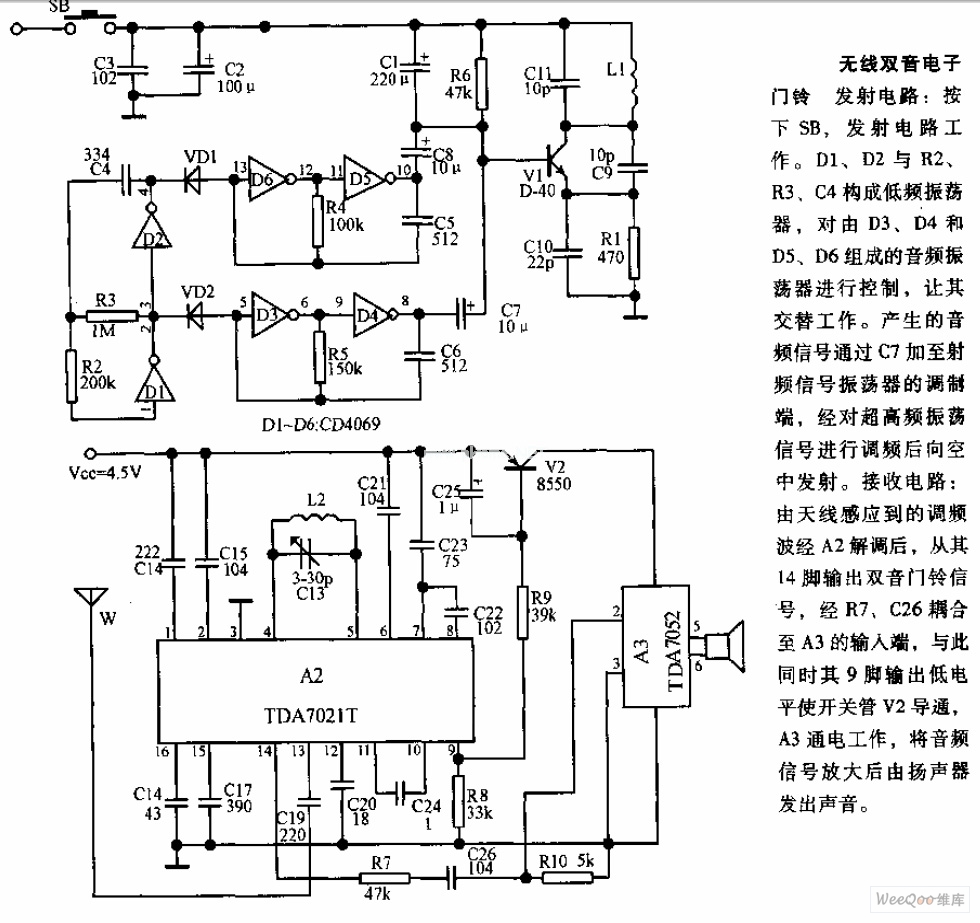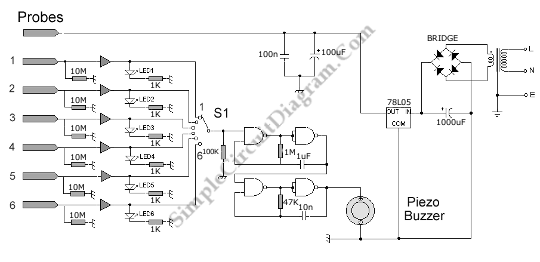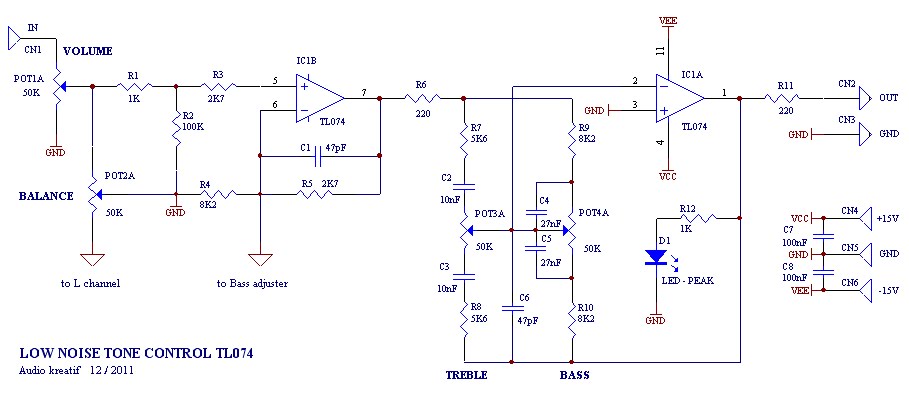
Personal Silent Alarm System Diagram Project
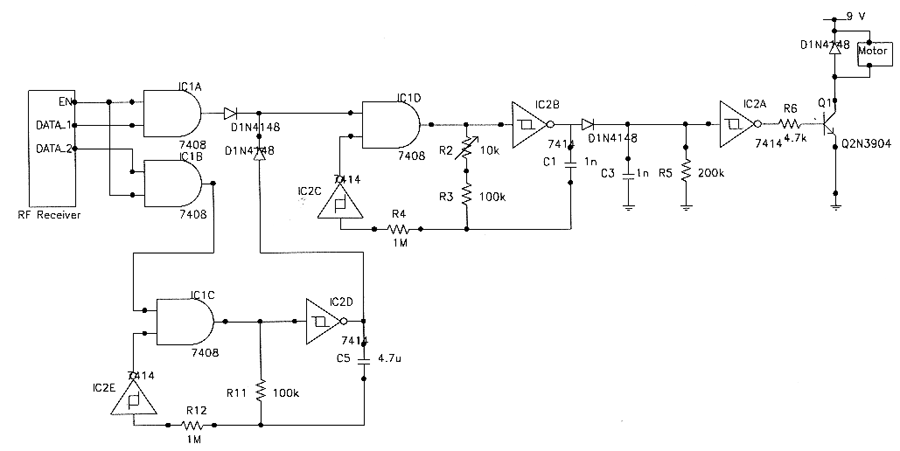
The TTY and the detector-transmitter unit are connected to separate phone jacks on the same line. When the ring sensor detects an incoming phone call, it activates the transmitter, which sends an RF signal to the receiver in the pager device. The receiver activates intermediate circuitry that drives the vibrating motor, alerting the user to the incoming call. This section describes the design and implementation of the ring detector and its connection to the transmitter, as well as the circuitry in the pager that connects the receiver to the vibrating motor. An understanding of the signals and standards used in telephone communication was necessary to build the interface between the telephone line and the transmitter. The signals on a silent and a ringing telephone line are illustrated in Figure 2.2. When the line is silent, a DC voltage of 48 V is present. During ringing, this voltage is superimposed with a sine wave of considerable amplitude, often reaching 80 Vrms, resulting in a peak voltage of Vp = 48 V ± 1.4 * 80 V = {+160 V; -64 V}. Not all telephone companies adhere to the same standard for their ring signals, leading to variations in amplitude and frequency. A telephone line in use typically has a small DC voltage of approximately 4 V, with a superimposed current signal (from voice, fax, or modem) that can change the voltage by up to 2 V in amplitude. To ensure compatibility with various telephone ring standards, the amplitude of the line voltage is utilized to distinguish a ringing line from other telephone line states. All telephone standards share the characteristic that the peak voltage of a ringing line is significantly higher than the DC voltage for a silent line or one in use. This method allows for the detection of a ring signal without regard for the frequency. Figure 2.3 depicts the block diagram of the ring detector. The incoming voltage Vl from the telephone line enters a peak detector, where the peak voltage is stored for 0.1 seconds, which is double the period of the lowest possible ringing frequency of 20 Hz. The output voltage Vp of the peak detector is 48 V for a silent line, greater than 48 V for a ringing line, and much less than 48 V when the line is in use. The voltage is about 2 V for a silent line, greater than 2 V for a ringing line, and much less than 2 V when the line is in use. Due to the inductance in the telephone line, high voltage peaks may occur if the current changes rapidly, which can be caused by dialing, unplugging phones, or operating mechanical ringers. Surge protection was implemented in the circuit to guard against these undesirable high voltages. A purchased transmitter-receiver pair, RT300T & RF300, was utilized to send an alert upon detection of an incoming call or a ringing doorbell. The vendor for this pair was Vistect Inc., P.O. Box 14156, Fremont, CA, 94539, (510) 651-1425. The transmitter operates at 318 MHz and supports up to three channels, with a specified transmission range of approximately 100 m. A security code can be set in both the transmitter and receiver to ensure privacy and prevent interference with other units using the same frequency. The transmitter is housed in a small hand-held plastic case with two buttons to activate either one or both channels and is powered by a 12-V battery. To interface the transmitter with other circuitry, the buttons were bypassed using PNP transistors. Figure 2.5 illustrates this configuration in a simplified circuit diagram of the modified transmitter. With this modification, transmission can be triggered by allowing a small current (from 0.1 to 5 mA) to flow from the base of the PNP transistors to ground.
The circuit design for the ring detector begins with the connection to the telephone line. The peak detector circuit is crucial for accurately capturing the ringing signal. It consists of a diode and a capacitor, where the diode rectifies the incoming AC signal and the capacitor holds the peak voltage for the specified duration. The choice of components must ensure that the circuit can handle the high voltages present during ringing while providing adequate protection against transients.
The transmitter section utilizes the RT300T module, which is designed for low-power applications. The RF signal is generated when the ring detector activates the transmitter, sending a coded signal to the receiver. The receiver, integrated within the pager device, decodes the signal and activates the motor driver circuitry, which in turn powers the vibrating motor.
The motor driver circuit typically employs a transistor or a relay to switch the motor on and off based on the received signal. The design must consider the current and voltage ratings of the motor to ensure reliable operation. Additionally, the use of a debounce circuit may be necessary to prevent false triggering due to noise in the signal.
Overall, the circuit must be designed with attention to component selection, layout, and protection mechanisms to ensure reliable and consistent performance across different telephone line standards. The incorporation of surge protection and the careful design of the interfacing circuitry play vital roles in maintaining the integrity and functionality of the system.The TTY and the detector-transmitter unit are connected to separate phone jacks on the same line. When the ring sensor detects an incoming phone call, it activates the transmitter, which sends an RF signal to the receiver in the pager device. The receiver activates intermediate circuitry which drives the vibrating motor and thus alerts the user to
the incoming call. In this section we describe the design and implementation of the ring detector and its connection to the transmitter. We also describe the circuitry in the pager that connects the receiver to the vibrating motor. We required an understanding of the signals and standards used in telephone communication in order to build the interface between the telephone line and the transmitter.
Figure 2. 2 shows the signals on a silent and a ringing telephone line. When the line is silent, a DC voltage of Vl = 48 V is present. During ringing this voltage is superposed with a sine wave of considerably large amplitude. Often the ringing amplitude is 80 Vrms, which gives a peak voltage of Vp = 48 V +/- 1. 4 * 80 V = {+160 V; -64 V}. Not all telephone companies use the same standard for their ring signals, so the amplitude and frequency can vary over a wide range. A telephone line in use has a small DC voltage of approximately Vl = 4 V with a superposed current signal (from a voice, fax, or modem) which corresponds to a voltage change of up to 2 V in amplitude.
In order to make our product compatible to every telephone ring standard, we used the amplitude of the line voltage to distinguish a ringing line from all other possible telephone line states. All telephone standards have one property in common: The peak voltage of a ringing line is significantly higher than the DC voltage for a silent line or a line in use.
Using this approach the frequency of the ringing signal does not play a role in detecting a ring signal. Figure 2. 3 shows the block diagram of the ring detector. The incoming voltage Vl comes from the telephone line and goes into a peak detector where the peak voltage is stored for 0.
1 seconds. This duration is double the period of the lowest possible ringing frequency of 20Hz. The voltage Vp is the output of the peak detector. Vp is 48 V for a silent line, greater than 48 V for a ringing line, and much less than 48 V when the line is in use. is about 2 V for the silent line, greater than 2 V for a ringing line, and much less than 2 V when the line is in use.
Because of the inductance in the telephone line, high voltage peaks can occur if the current in the line changes rapidly. Such current changes can be caused by dialing, unplugging phones, driving mechanical ringers, and so forth.
To protect our circuit from these undesirable high voltages, we implemented surge protection in our circuit. A purchased transmitter-receiver pair, RT300T & RF300, was used to send an alert on detection of an incoming call or a ringing doorbell.
The vendor for the pair was Vistect Inc. , P. O. Box 14156 Fremont, CA, 94539, (510) 651-1425. The transmitter operates at 318 MHz and provides up to three channels. According to the specifications given in its data sheet its transmission range is about 100 m. A security code can be set in the transmitter and the receiver to provide privacy and to prevent interference with other transmitter units using the same frequency. The transmitter was packaged as a small hand-held device in a plastic case with two buttons to trigger either one or both of the channels.
It was powered by a 12-V battery. In order to interface the transmitter to other circuitry, we bypassed the buttons with PNP transistors. Figure 2. 5 shows this configuration in a simplified circuit diagram of our modified transmitter. With this modification, the transmission can be triggered by causing a small current (from 0. 1 to 5 mA) to flow from the base of the PNP transistors to ground. While testing, we supplied this current 🔗 External reference
The circuit design for the ring detector begins with the connection to the telephone line. The peak detector circuit is crucial for accurately capturing the ringing signal. It consists of a diode and a capacitor, where the diode rectifies the incoming AC signal and the capacitor holds the peak voltage for the specified duration. The choice of components must ensure that the circuit can handle the high voltages present during ringing while providing adequate protection against transients.
The transmitter section utilizes the RT300T module, which is designed for low-power applications. The RF signal is generated when the ring detector activates the transmitter, sending a coded signal to the receiver. The receiver, integrated within the pager device, decodes the signal and activates the motor driver circuitry, which in turn powers the vibrating motor.
The motor driver circuit typically employs a transistor or a relay to switch the motor on and off based on the received signal. The design must consider the current and voltage ratings of the motor to ensure reliable operation. Additionally, the use of a debounce circuit may be necessary to prevent false triggering due to noise in the signal.
Overall, the circuit must be designed with attention to component selection, layout, and protection mechanisms to ensure reliable and consistent performance across different telephone line standards. The incorporation of surge protection and the careful design of the interfacing circuitry play vital roles in maintaining the integrity and functionality of the system.The TTY and the detector-transmitter unit are connected to separate phone jacks on the same line. When the ring sensor detects an incoming phone call, it activates the transmitter, which sends an RF signal to the receiver in the pager device. The receiver activates intermediate circuitry which drives the vibrating motor and thus alerts the user to
the incoming call. In this section we describe the design and implementation of the ring detector and its connection to the transmitter. We also describe the circuitry in the pager that connects the receiver to the vibrating motor. We required an understanding of the signals and standards used in telephone communication in order to build the interface between the telephone line and the transmitter.
Figure 2. 2 shows the signals on a silent and a ringing telephone line. When the line is silent, a DC voltage of Vl = 48 V is present. During ringing this voltage is superposed with a sine wave of considerably large amplitude. Often the ringing amplitude is 80 Vrms, which gives a peak voltage of Vp = 48 V +/- 1. 4 * 80 V = {+160 V; -64 V}. Not all telephone companies use the same standard for their ring signals, so the amplitude and frequency can vary over a wide range. A telephone line in use has a small DC voltage of approximately Vl = 4 V with a superposed current signal (from a voice, fax, or modem) which corresponds to a voltage change of up to 2 V in amplitude.
In order to make our product compatible to every telephone ring standard, we used the amplitude of the line voltage to distinguish a ringing line from all other possible telephone line states. All telephone standards have one property in common: The peak voltage of a ringing line is significantly higher than the DC voltage for a silent line or a line in use.
Using this approach the frequency of the ringing signal does not play a role in detecting a ring signal. Figure 2. 3 shows the block diagram of the ring detector. The incoming voltage Vl comes from the telephone line and goes into a peak detector where the peak voltage is stored for 0.
1 seconds. This duration is double the period of the lowest possible ringing frequency of 20Hz. The voltage Vp is the output of the peak detector. Vp is 48 V for a silent line, greater than 48 V for a ringing line, and much less than 48 V when the line is in use. is about 2 V for the silent line, greater than 2 V for a ringing line, and much less than 2 V when the line is in use.
Because of the inductance in the telephone line, high voltage peaks can occur if the current in the line changes rapidly. Such current changes can be caused by dialing, unplugging phones, driving mechanical ringers, and so forth.
To protect our circuit from these undesirable high voltages, we implemented surge protection in our circuit. A purchased transmitter-receiver pair, RT300T & RF300, was used to send an alert on detection of an incoming call or a ringing doorbell.
The vendor for the pair was Vistect Inc. , P. O. Box 14156 Fremont, CA, 94539, (510) 651-1425. The transmitter operates at 318 MHz and provides up to three channels. According to the specifications given in its data sheet its transmission range is about 100 m. A security code can be set in the transmitter and the receiver to provide privacy and to prevent interference with other transmitter units using the same frequency. The transmitter was packaged as a small hand-held device in a plastic case with two buttons to trigger either one or both of the channels.
It was powered by a 12-V battery. In order to interface the transmitter to other circuitry, we bypassed the buttons with PNP transistors. Figure 2. 5 shows this configuration in a simplified circuit diagram of our modified transmitter. With this modification, the transmission can be triggered by causing a small current (from 0. 1 to 5 mA) to flow from the base of the PNP transistors to ground. While testing, we supplied this current 🔗 External reference

